Posing and Props: How Comic Artists Effectively Use Reference Material for Art
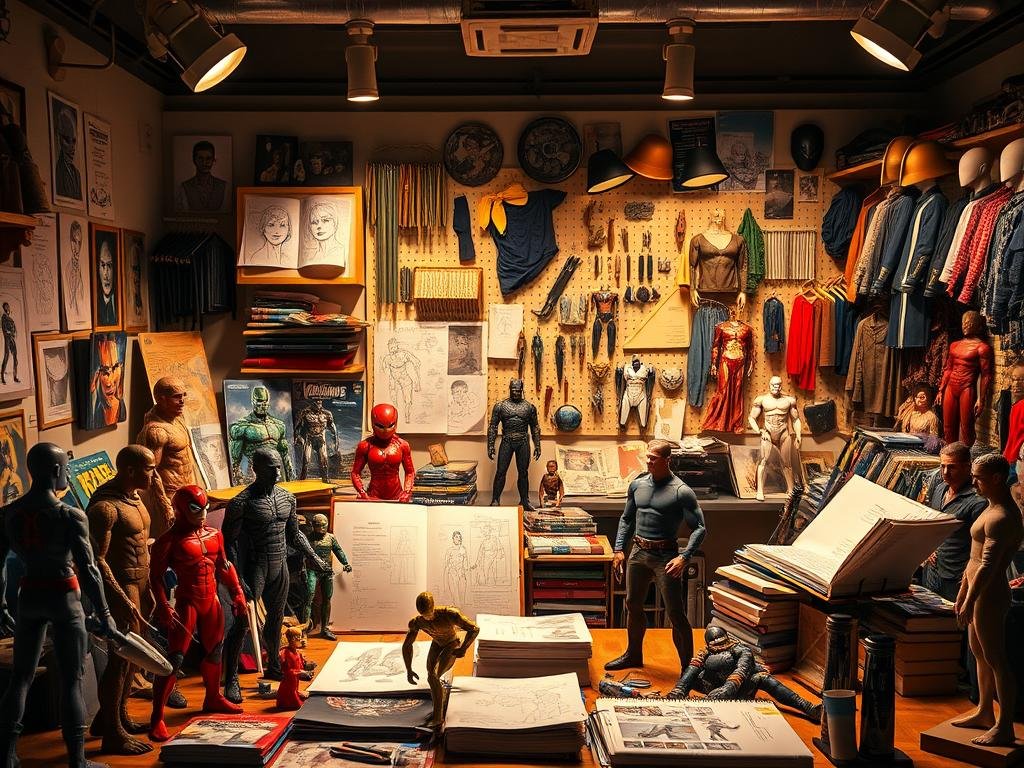
Years ago, I believed using reference material for comic art was a sign of weakness. In art school, I thought true talent meant creating everything purely from imagination. My stubborn mindset blocked me from understanding the powerful tool that reference material could be for comic artists.
Reference material for comic art isn’t about copying—it’s about understanding. Professional comic artists use references to capture realistic poses, anatomy, lighting, and emotional depth. What I once saw as a crutch is actually a sophisticated technique that elevates artistic expression.
My journey from reference skeptic to believer taught me that great comic art isn’t about perfect drawing skills. It’s about storytelling, emotion, and creating visual narratives that resonate with readers. References became my secret weapon for creating more authentic, dynamic characters and scenes.
Comic artists reference material art is a nuanced skill that requires practice, discernment, and creativity. By embracing references, artists can transform their work from good to extraordinary, bringing unprecedented authenticity to their visual storytelling.
Understanding the Evolution of Reference Material in Comic Art
The world of comic art has undergone a remarkable transformation in how artists approach reference materials. My journey as an artist revealed the critical importance of understanding and leveraging reference techniques throughout the evolution of comic art references.
Comic artists have traditionally relied on multiple methods to capture accurate representations of characters and environments. The digital comic art resources available today have revolutionized how we approach visual storytelling.
Traditional Reference Methods
In the past, artists used several approaches to gather reference materials:
- Sketching from live models
- Using physical photography
- Studying anatomical reference books
- Tracing and observing real-world movements
Breaking the Stigma of Using References
Artists once viewed using references as a sign of weakness. Now, professionals understand that references are essential tools for artistic growth. Top comic book creators actively encourage using reference materials to improve accuracy and storytelling.
| Era | Reference Approach | Key Characteristics |
|---|---|---|
| Pre-Digital | Manual Sketching | Limited resources, time-consuming |
| Digital Transition | Photography & Digital Tools | Increased accessibility, precision |
| Modern Era | 3D Modeling & Online Resources | Instant global reference access |
Enhancing Artistic Growth
Digital comic art resources have transformed how I approach character design and storytelling. By studying diverse references, artists can:
- Improve anatomical understanding
- Develop more dynamic poses
- Create more authentic character interactions
- Expand creative possibilities
The stigma surrounding reference materials has completely disappeared. Artists now recognize that references are not shortcuts but powerful tools for artistic development.
The Essential Tools for Comic Art Reference
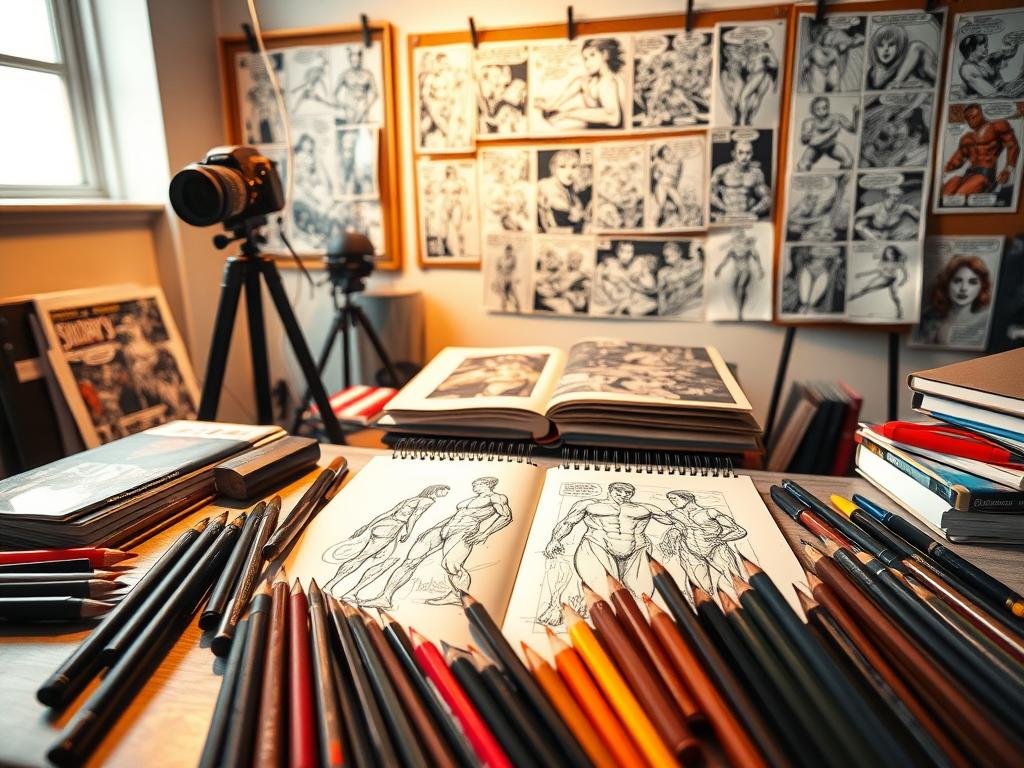
As a comic artist, I’ve discovered that building a robust collection of comic art reference tools is crucial for creating compelling visual narratives. The right essential reference materials can transform your artwork from good to extraordinary.
My toolkit for comic art references includes a diverse range of resources:
- Digital Photo Libraries: Websites like Unsplash and Pinterest offer high-quality images for pose and anatomy references
- 3D Modeling Software: Platforms such as Blender and ZBrush help artists create precise character poses
- Anatomy and Perspective Sketchbooks
- Online Stock Photo Repositories
- Specialized Artist Reference Apps
When selecting comic art reference tools, I focus on versatility and accuracy. Digital resources have revolutionized how artists approach reference gathering. Professional artists now leverage technology to create more dynamic and authentic character designs.
My recommended essential reference materials include:
- Anatomical Reference Guides
- Character Pose Collections
- Environmental and Props Databases
- Motion and Action Reference Videos
By curating a comprehensive collection of reference materials, comic artists can elevate their storytelling and artistic expression. The key is to use references as a foundation for creativity, not a restrictive template.
Mastering Photo References for Character Design
Creating compelling comic characters requires more than just artistic skill. Photo references for comics are essential tools that help artists bring their characters to life with authenticity and depth. As a comic artist, I’ve learned that character design references can transform flat illustrations into dynamic, expressive narratives.
Visual storytelling demands precision in capturing human emotions and movements. Professional comic artists use various strategies to gather and implement photo references effectively:
- Use high-quality camera equipment for clear reference shots
- Create a diverse reference library of poses and expressions
- Develop a systematic approach to documenting references
- Practice translating photographic details into your unique style
Capturing the Right Poses and Expressions
Successful character design references require careful observation. I recommend studying real-world movements and emotional nuances. Capturing subtle body language can elevate your comic characters from simple drawings to compelling personalities.
Working with Models and Self-Reference
Many comic artists, including myself, use personal photography as a primary reference source. Self-reference allows for intimate understanding of body mechanics and genuine emotional ranges. Professional artists often create staged photo shoots to capture specific character moments.
Adapting Photos to Your Art Style
The key to using photo references for comics is transformation, not direct copying. Artists must learn to interpret photographic details through their unique artistic lens, maintaining personal style while ensuring anatomical accuracy.
| Reference Type | Advantages | Challenges |
|---|---|---|
| Personal Photography | Complete creative control | Limited pose variety |
| Professional Models | Diverse body types | Higher cost |
| Online Reference Libraries | Extensive collection | Potential copyright issues |
Comic Artists Reference Material Art: Best Practices and Techniques
Mastering comic art reference techniques requires a strategic approach that balances creativity and visual accuracy. As an artist, I’ve learned that using references effectively can dramatically improve the quality and authenticity of my artwork.
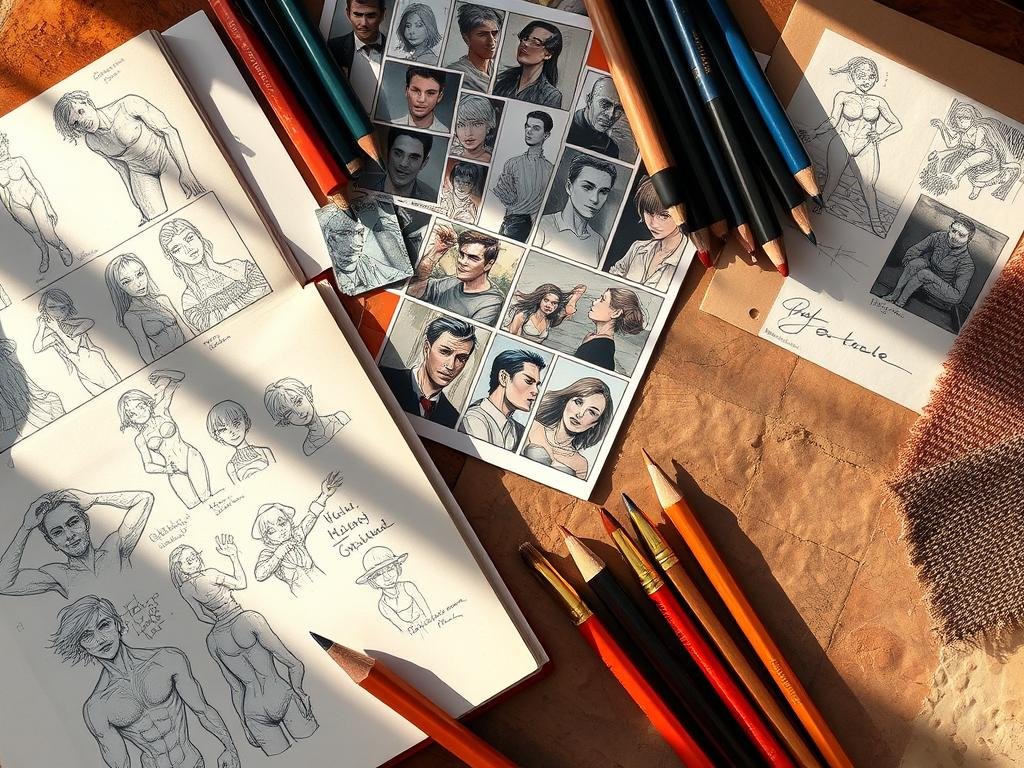
When working with references, I follow these key best practices for using references:
- Analyze multiple reference images to understand complex poses
- Simplify detailed references to match your artistic style
- Use references as a guide, not an exact template
- Combine elements from different references to create unique compositions
Understanding lighting and shadow becomes crucial when translating references into comic art. I recommend creating a systematic approach to visual interpretation:
- Identify primary light sources in reference images
- Sketch basic shadow patterns
- Adapt lighting to match your character’s environment
- Exaggerate shadows for dramatic comic book effect
Developing comic art reference techniques requires practice and patience. I always encourage artists to experiment with different reference materials and gradually build their visual vocabulary.
| Reference Type | Artistic Benefit | Recommended Usage |
|---|---|---|
| Photography | Realistic Body Mechanics | Dynamic Action Poses |
| 3D Models | Perspective Accuracy | Complex Anatomical Structures |
| Live Models | Authentic Expressions | Character Emotion Studies |
Remember, the goal is to use references intelligently – they should enhance your artistic vision, not restrict it.
Creating Dynamic Compositions Using Reference Material
Crafting dynamic comic compositions requires more than just copying reference images. As a comic artist, I’ve learned that transforming static references into vibrant storytelling scenes is an art form that demands creativity and strategic thinking.
Reference-based layouts serve as the foundation for compelling visual narratives. The key is to understand how to manipulate and interpret source material to breathe life into your artwork.
Understanding Visual Flow and Layout
Creating dynamic comic compositions involves several critical techniques:
- Analyze the energy and movement within reference images
- Break down complex poses into fundamental shapes
- Exaggerate key elements to enhance dramatic impact
Balancing Detail and Simplification
When working with references, I focus on capturing the essence of a scene without getting bogged down in minute details. This approach helps maintain visual clarity and storytelling power.
| Technique | Purpose | Implementation |
|---|---|---|
| Selective Detailing | Guide viewer’s attention | Emphasize critical areas, simplify backgrounds |
| Dynamic Poses | Create visual tension | Adjust reference poses for maximum impact |
Incorporating Environmental Elements
Environmental references breathe authenticity into comic scenes. I recommend collecting diverse visual references that capture unique architectural and landscape details. These elements add depth and context to your dynamic comic compositions.
“References are not constraints, but launching pads for artistic imagination.” – Professional Comic Artist
By mastering these techniques, artists can transform static references into electrifying visual narratives that captivate readers and showcase true creative potential.
Digital Resources and 3D Models in Modern Comic Art
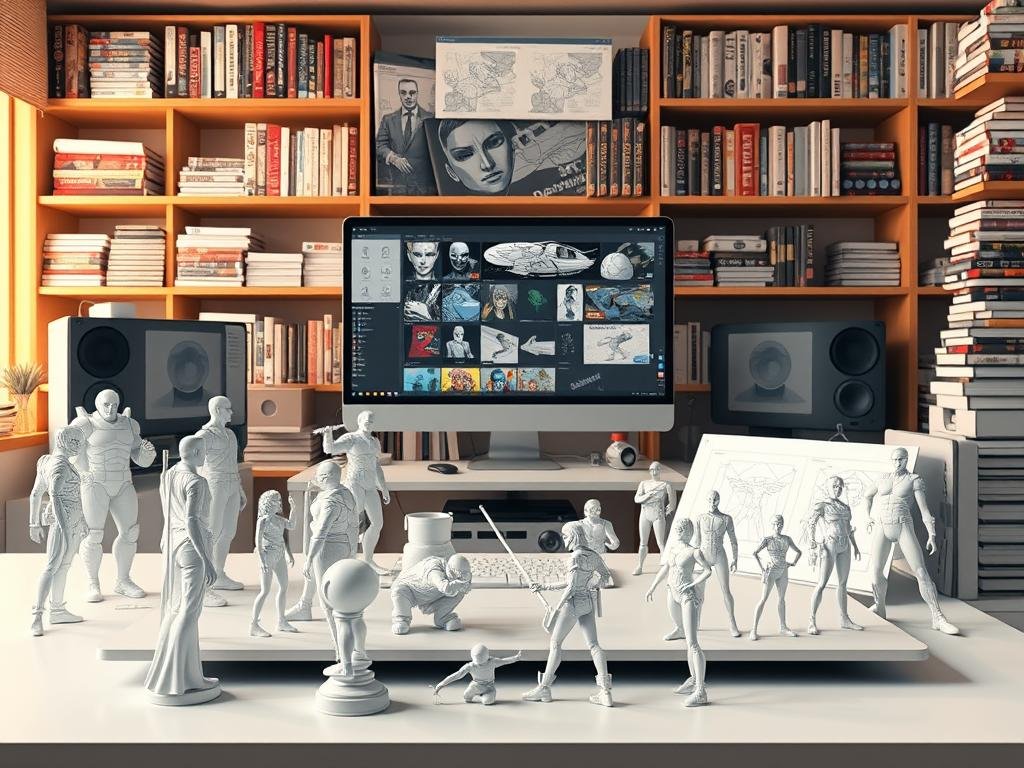
Digital comic resources have revolutionized the way artists approach character design and storytelling. As a comic artist, I’ve discovered that 3D models for comics offer unprecedented opportunities for creating dynamic and realistic illustrations.
Modern digital tools provide artists with powerful reference capabilities. These resources help overcome traditional artistic challenges by offering:
- Precise anatomical references
- Complex pose generation
- Perspective visualization
- Lighting and shadow simulation
My workflow now integrates several key digital comic resources. Posing software allows me to experiment with character positioning without exhausting live models. Programs like ZBrush and Blender enable artists to craft intricate 3D models for comics with remarkable detail and accuracy.
Key advantages of digital reference tools include:
- Reduced production time
- Enhanced anatomical precision
- Consistent character representations
- Flexible pose exploration
While digital resources are powerful, they should complement—not replace—traditional artistic skills. The most successful artists blend technological tools with personal creative vision.
Props and Environment Reference Guidelines
Creating a robust reference library is crucial for comic artists seeking to elevate their craft. My approach to developing comprehensive comic props reference and environment reference for comics involves strategic collection and organization of visual resources.
Building a reference library requires careful planning and thoughtful curation. I recommend starting with diverse sources that capture the essence of your artistic vision. Digital platforms like Clip Studio Paint offer incredible tools for artists to manage and utilize reference materials effectively.
Building a Reference Library
When constructing your reference collection, consider these key strategies:
- Photograph real-world objects and environments
- Collect images from magazines and books
- Save screenshots from movies and documentaries
- Download royalty-free images from reputable websites
- Create personal sketches of interesting objects and scenes
Organizing and Accessing Reference Materials
Efficient organization is vital for a practical reference library. I use digital folders categorized by:
- Object type
- Environment
- Artistic style
- Color palette
- Specific project requirements
Legal Considerations for Reference Usage
Navigating copyright laws is essential when using references. Always ensure you have the right to use visual materials. This means either creating your own references, purchasing stock images, or obtaining explicit permission from the original creator.
Respect for intellectual property is the cornerstone of ethical artistic practice.
Remember, a well-curated reference library transforms your comic art by providing inspiration and technical guidance while maintaining artistic integrity.
Avoiding Common Reference Material Pitfalls
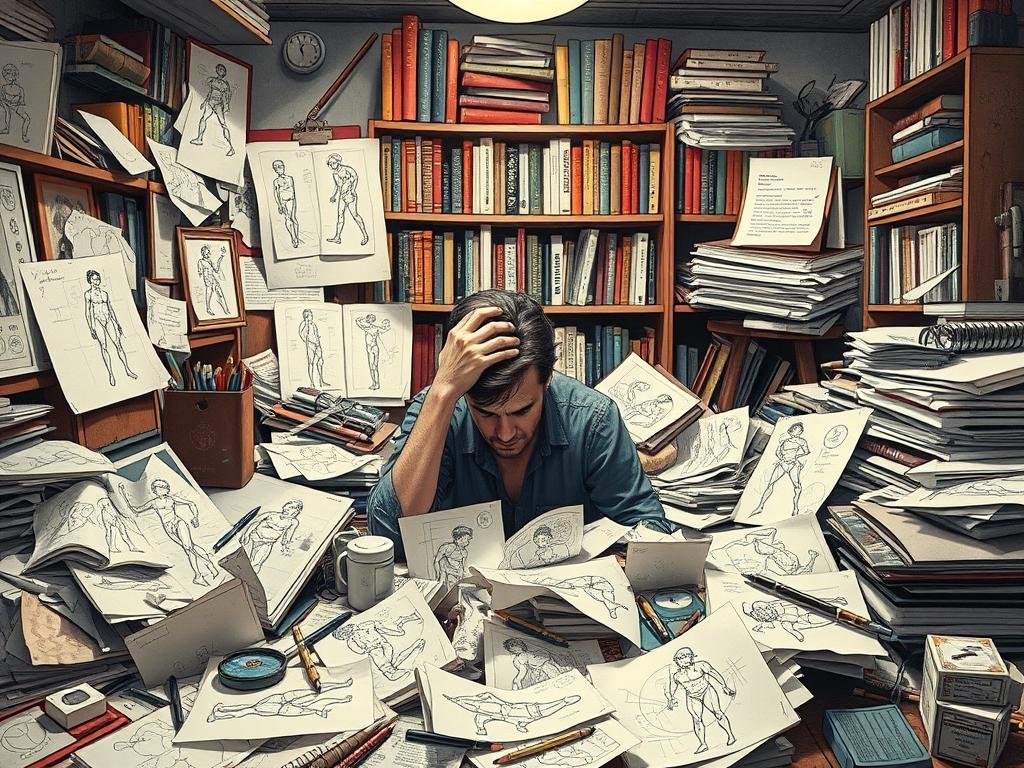
Navigating comic reference pitfalls can be tricky for artists seeking to improve their craft. I’ve learned that references are powerful tools, but they can quickly become crutches that limit creative potential. Overcoming reference challenges requires a strategic approach and self-awareness.
Artists often fall into several common traps when using reference materials:
- Spending excessive time searching for the perfect reference
- Directly copying images instead of using them as inspiration
- Becoming paralyzed by perfectionism
- Losing the unique essence of personal artistic style
The key to mastering reference materials is understanding their true purpose. References should guide and inform, not dictate your entire creative process. I recommend setting strict time limits when using references and focusing on capturing essential elements rather than minute details.
Developing a healthy relationship with reference materials means learning to trust your artistic instincts. Start by using references as initial guides, then quickly transition to drawing from memory and imagination. This approach helps maintain your unique visual language while still benefiting from reference insights.
References are a bridge to improvement, not a destination.
To effectively overcome reference challenges, practice these strategies:
- Set a 10-15 minute reference research limit
- Sketch quickly after reviewing references
- Experiment with multiple reference sources
- Always aim to transform, not replicate
By implementing these techniques, comic artists can transform potential reference pitfalls into opportunities for growth and creativity.
Developing Your Own Reference System
Creating a personalized reference system is crucial for comic artists looking to streamline their comic art workflow. I’ve discovered that developing an effective reference collection goes beyond simply gathering random images. It’s about building a strategic visual library that enhances your artistic process.
My approach to a personalized reference system involves several key strategies:
- Organize references by specific categories
- Create digital and physical archives
- Develop a consistent tagging method
- Update your collection regularly
Digital tools have revolutionized how artists manage references. I recommend using specialized software like PureRef or Cortex for organizing visual. These platforms allow quick access and easy categorization of your reference images.
| Reference Type | Storage Method | Accessibility |
|---|---|---|
| Character Poses | Digital Folder | High |
| Environment Sketches | Cloud Storage | Medium |
| Anatomy References | Physical Binder | Low |
The key to a successful personalized reference system is flexibility. Your collection should evolve with your artistic skills. Don’t be afraid to experiment and find what works best for your unique comic art workflow.
Integrating References While Maintaining Artistic Style
Comic art is a delicate dance between reference and imagination. As an artist, I’ve learned that maintaining a comic art style requires careful balance and creative interpretation. References are powerful tools, but they shouldn’t overpower your unique artistic voice.
- Understand your artistic foundation
- Use references as guidelines, not strict templates
- Develop a consistent visual language
- Adapt references to match your personal style
Finding Your Artistic Balance
When incorporating references, I focus on capturing the essence rather than copying exactly. This approach helps maintain my distinctive comic art style while still benefiting from realistic details.
Developing a Consistent Visual Language
Creating a cohesive visual narrative means applying references thoughtfully. Here’s a breakdown of how to integrate references seamlessly:
| Technique | Implementation | Artistic Impact |
|---|---|---|
| Stylization | Simplify complex references | Maintain unique style |
| Color Adaptation | Adjust reference colors to palette | Consistent visual theme |
| Proportional Modification | Adjust body and facial proportions | Personal artistic signature |
Remember, the goal is not to replicate reality but to create a compelling visual story that speaks with your artistic voice. References are tools, and your creativity is the true masterpiece.
The Future of Reference Material in Comic Art
The landscape of comic art references is rapidly transforming with cutting-edge technologies. As an artist deeply invested in evolving reference techniques, I see an exciting horizon of innovative tools that will revolutionize how creators approach visual storytelling.
Artificial intelligence and augmented reality are becoming game-changers in the future of comic art references. These technologies offer unprecedented opportunities for artists to explore and enhance their creative processes:
- AI-powered pose generation tools
- Real-time 3D modeling platforms
- Advanced digital reference libraries
- Virtual reality character design environments
Digital modeling is pushing the boundaries of traditional reference material. Emerging technologies allow artists to create hyper-realistic digital models that can be manipulated from multiple angles, providing unprecedented flexibility in character and scene development.
Despite technological advancements, human creativity remains paramount. The most successful artists will be those who skillfully blend technological tools with their unique artistic vision, using evolving reference techniques to enhance rather than replace their creative expression.
“Technology is a tool, not a replacement for artistic imagination.” – Contemporary Comic Artist
Aspiring comic artists should embrace these emerging technologies while maintaining their distinctive style. The future of comic art references is about intelligent integration, not wholesale replacement of traditional artistic skills.
Conclusion
Mastering effective comic art references is a transformative journey that can dramatically improve your artistic skills. Throughout our exploration, we’ve uncovered the powerful potential of reference materials as essential tools for comic artists.
By embracing a strategic approach to gathering and implementing references, you can unlock new levels of creativity and technical precision in your artwork.
Improving comic art skills isn’t about copying, but about understanding the fundamental elements that bring characters and scenes to life. References serve as a critical learning mechanism, helping artists develop a deeper understanding of anatomy, movement, lighting, and composition.
The key is to view references as a guide, not a constraint—allowing them to inform your unique artistic vision while maintaining your personal style.
As you continue to develop your craft, remember that building a robust reference library takes time and dedication. Start by collecting diverse visual resources, experimenting with different techniques, and always challenging yourself to push beyond your current skill level.
The most successful comic artists view references as a collaborative tool that enhances their creative process, not a shortcut that limits their artistic expression.
My advice to aspiring comic artists is simple: be curious, stay observant, and never stop learning. Your artistic journey is uniquely yours, and effective comic art references will be your trusted companions along the way. Embrace them, learn from them, and watch your artistic skills evolve in ways you never imagined.
FAQ
Q: Is using reference material considered cheating in comic art?
A: No, using reference material is not cheating. In fact, it’s a professional technique used by many successful comic artists to improve accuracy, consistency, and efficiency in their artwork. References are a valuable tool for artistic growth and development.
Q: How do I avoid directly copying reference photos?
A: To avoid direct copying, focus on understanding the fundamental elements of your reference – like pose, lighting, and proportion. Use references as a guide to inform your artistic interpretation, then adapt and transform the image to match your unique style and creative vision.
Q: What are the best sources for reference materials?
A: The best sources include photo libraries, anatomy books, 3D modeling software, live model photography, digital asset libraries, and personal photo collections. Professional artists often combine multiple reference sources to create comprehensive and accurate visual references.
Q: How can I build an effective reference library?
A: Start by organizing references by category (poses, environments, props, anatomy), use digital organization tools, create physical or digital mood boards, and continuously update your collection. Ensure you have diverse references that support different artistic needs.
Q: Are there legal considerations when using reference materials?
A: Yes, always be aware of copyright laws. Use royalty-free images, obtain proper permissions, create your own references, or use stock photo services. When using references, transform them significantly to create an original work and avoid direct reproduction.
Q: How much should I rely on references?
A: References should enhance, not replace, your artistic skills. Aim to use them as a learning tool and starting point, not a crutch. Practice drawing from memory and references to develop your observational and technical skills.
Q: Can digital tools replace traditional reference methods?
A: Digital tools complement traditional methods but don’t completely replace them. 3D modeling software, digital asset libraries, and AI tools can be incredibly helpful, but they work best when combined with traditional observation and artistic interpretation.
Q: How do I maintain my artistic style while using references?
A: Focus on understanding the core principles of your reference, then filter them through your unique artistic lens. Simplify, exaggerate, or stylize reference elements to align with your personal visual language and comic art style.
Q: What’s the best way to use references for character design?
A: Combine multiple references to capture different aspects of a character – facial expressions, body language, clothing details. Use references to understand anatomy and movement, then adapt them to create a character that feels both realistic and unique.
Q: How can references improve my comic art composition?
A: References help you understand perspective, lighting, and spatial relationships. Use them to create more dynamic layouts, add depth to your scenes, and ensure consistency across different panels and pages of your comic.
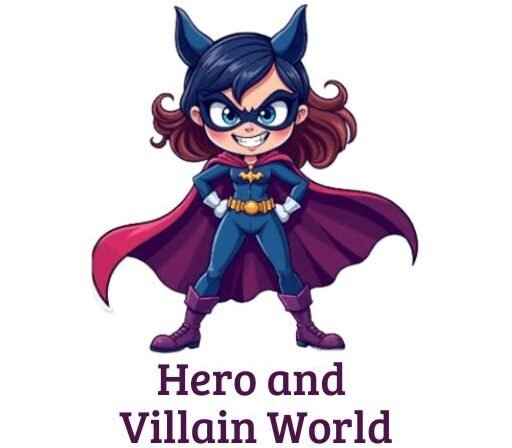

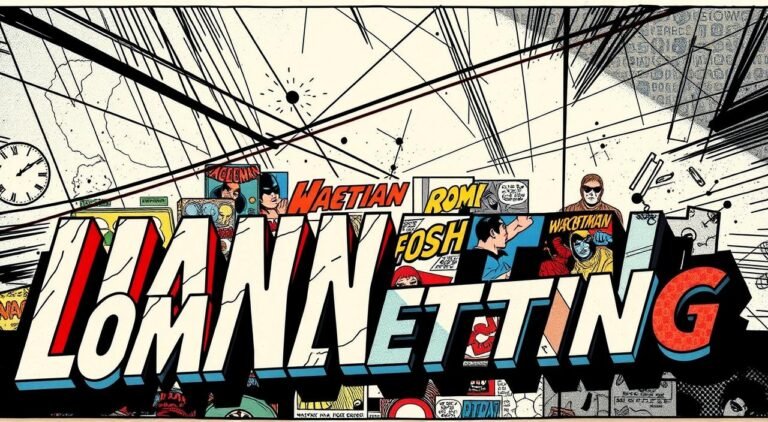
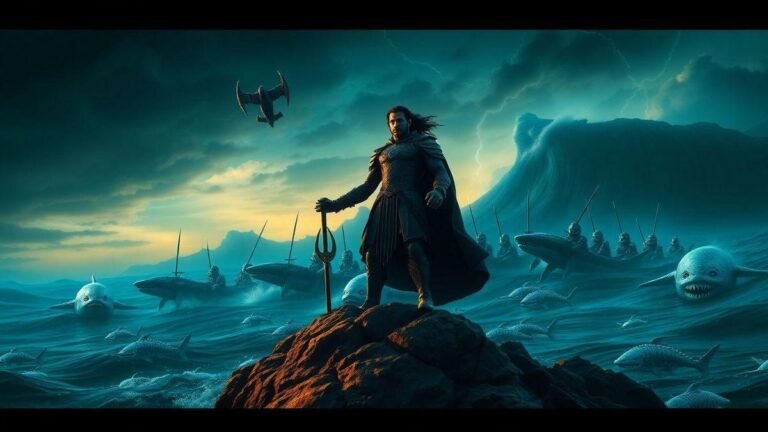

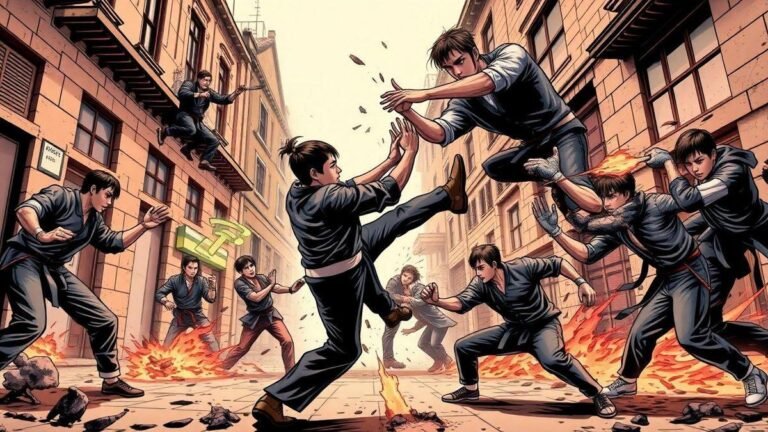

One Comment